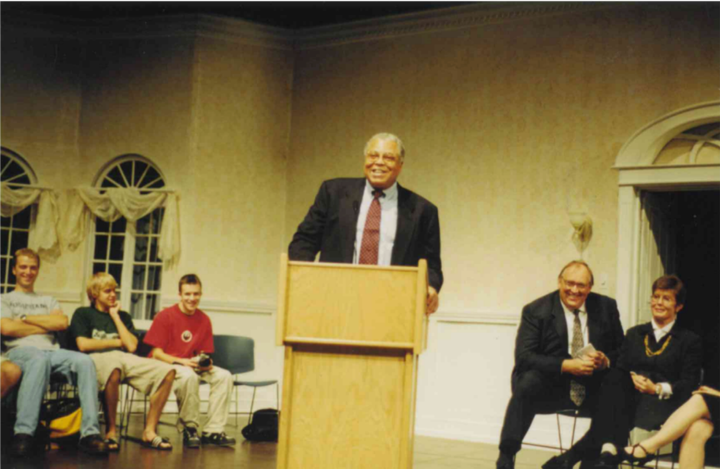Voter turnout down from last year’s peak

Graber, Hurley win election
MATTHEW SCHILLING
After two elections, Katelyn Graber and Luke Hurley secured a decisive win for ASA president and vice president.
Graber and Hurley collected slightly over 65 percent of the vote, winning 363 votes to Abbie Sell and Max Boyum’s 193. Voter turnout was around 35 percent, far below last year’s record 55 percent.
“We were very excited by the enthusiasm and creativity that was brought to this year’s campaign by all candidates,” Graber and Hurley said.
They added that they hope to implement reforms to Augustana’s core values and to ASA meetings as indicated in their platform.
ASA advisor and Dean of Students Jim Bies said that while this year’s turnout was lower than the last two years, it aligned with the average turnout since the move to electronic balloting a decade ago.
“As we got into more of the electronic voting and got away from the paper ballots in the last decade, we got closer to 600,” Bies said. “In the years we have a primary, voter turnout is much higher [in the primary] than it is for the general election.”
Election commissioner Katie Romano agreed this year’s primary election might have impacted turnout, though she believes voter indifference also contributed.
“I think the real issue is apathy, a feeling that my vote won’t make a difference,” Romano said.
Bies also suggested that voters might have felt overwhelmed with “every wall, every door being plastered with campaign information. … My own experience, and I hear this from students, was in the Commons it was the same poster every 15-30 feet.”
Campaigns, in addition to traditional posters, distributed mailers in campus boxes, went door-to-door, and the Graber/Hurley campaign hosted a bonfire event and planted yard signs.
Romano considered Graber and Hurley’s campaigning to be “most creative” and that she would be “interested to see how much money each group spent on a campaign and if you could track this to success.”
Graber said the yard signs and bonfire were used by previous candidates and that she and Hurley consulted with previous successful campaigns as a guide for their own.
“Our goal for the ASA campaign was to share our platform and reach students with a campaign visible both on-campus and online,” Graber said. “We assessed strategies utilized in years past, including bonfires, ice cream socials, snapchat filters, Twitter, Facebook, websites, yard signs and posters around campus.”
The Sell and Boyum campaign was critical of their opponents’ campaign spending. Sell characterized some of the strategy as “wastefulness and excessive monetary spending” and suggested ASA should cap future campaign expenditures.
“If not, I absolutely believe it could prohibit qualified students from running,” Sell said.
Similar criticisms appeared on the since-removed Facebook page for Sell and Boyum’s campaign.
While some campuses do require that student association campaigns disclose financial expenditures and cap spending, ASA lacks any campaign spending policy. Sell estimates that she and Boyum spent about $275 on their campaign. Graber and Hurley did not disclose their spending amount.
Neither Bies nor Romano said there was any specific reason for ASA’s policy on spending but did say it could change in the future.
One campaign policy that will soon change is the current provision regulating where campaigning can be done.
“In the election code, it has always been that you cannot campaign within 100 feet of the ballot boxes,” Romano said. “When [the] ASA was founded, it was a physical ballot.”
With voting now conducted on Viking Central, there is no physical location of a “ballot box,” making the current policy ambiguous and outdated. During the primary campaign, all three campaigns (likely unknowingly) violated the code.
“Since all three were in violation, we ruled that no punishment would be made,” Romano said. “We changed the code in spring to remove some ambiguity and obsolete phrases.”
Bies further “really recommend[s] that the election code be given a close eye,” saying the system does well in general but has failed to keep up with social media’s impact on campaigning.



